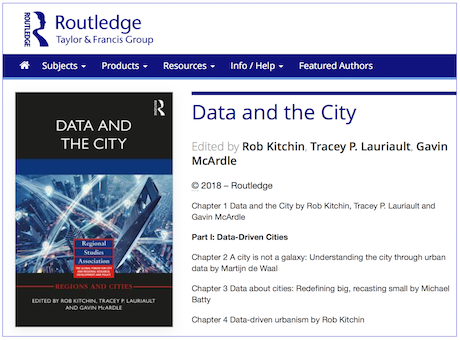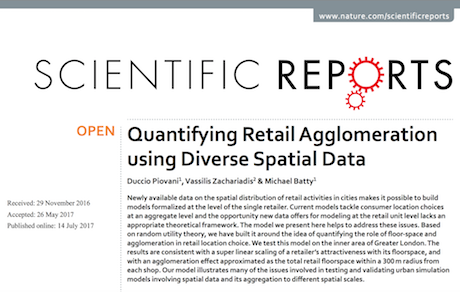A new book on data and big data in the city edited by Rob Kitchin, Tracey P. Lauriault, Gavin McArdle from Routledge. Lot of very interesting material here on the data revolution in cities. Smart cities concepts are explained and critiqued here which were the Proceedings from a workshop held at Kitchin’s Programmable Cities Project in Maynooth in 2016. Essential reading for all those interested in smart cities. My own contribution can be downloaded here but i don’t have the printed copy from the book so you have to make do with the proof version prior to publication. Click on here.
Data and the City
Smart Cities in Geography Review
Geography Review is a brand new magazine for sixth formers (grade 12-13 in the US) studying any subject but particularly those who are interested in geography. In the UK geography is one of the top subjects in high school and the new magazine covers new ideas that are making their way into the geography curriculum. I have produced a poster that you can download if you click on the image above or directly from the web site. You will find the content if you log on here and this gives you a quiz about the articles in this first issue. Your library will need to subscribe but the first issue is on drought and hazards amongst several other things, including my own poster which is on Smart Cities. I don’t know how big you can print this poster at but it is certainly ok at A3 scale and I hope you can make it a lot bigger. Little kids even might be interested so show you children.
Interacting Agglomerations
A paper originating from our EU FP7 Insight project on extending land use transportation models to embrace better sub models of the retailing sector. Our paper entitled “Quantifying Retail Agglomeration using Diverse Spatial Data” by Duccio Piovani, Vassilis Zachariadis and myself has just been published in Scientific Reports – you can download it here. The model partitions the agglomerating effects of retailing into two scales: the typical zonal scale where consumers travel to shopping centres of different sizes and at different distances/travel times from the places where they generate their demand for such goods, and shopping centres themselves where shops of different and like sorts agglomerate, thus affecting the demand for particular retails goods within each shopping centre. The model is quite straightforward in that it has the structure of a nested logit model of discrete choice where the nests are the shopping centres within which the individual retailing facilities are located. We fit the model to data for the inner area of the Greater London region, and you can get the results from the paper.











